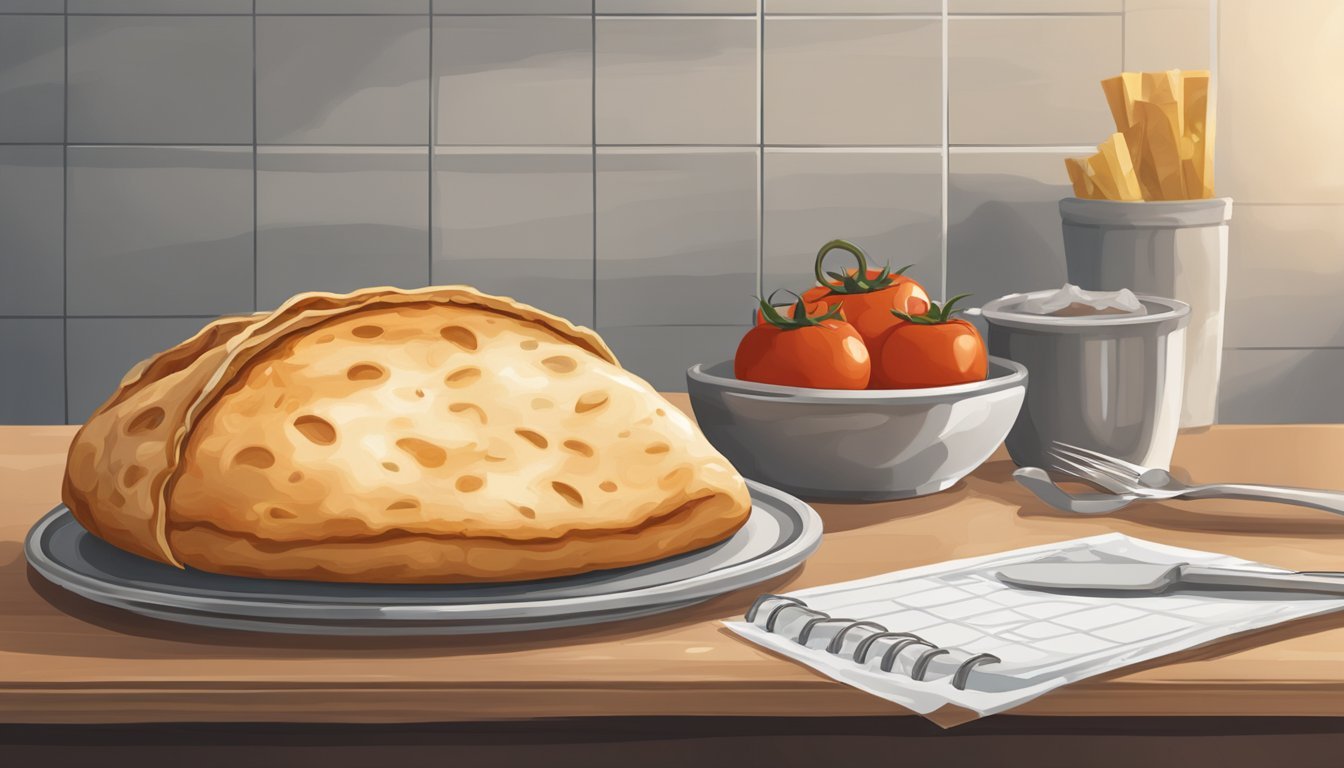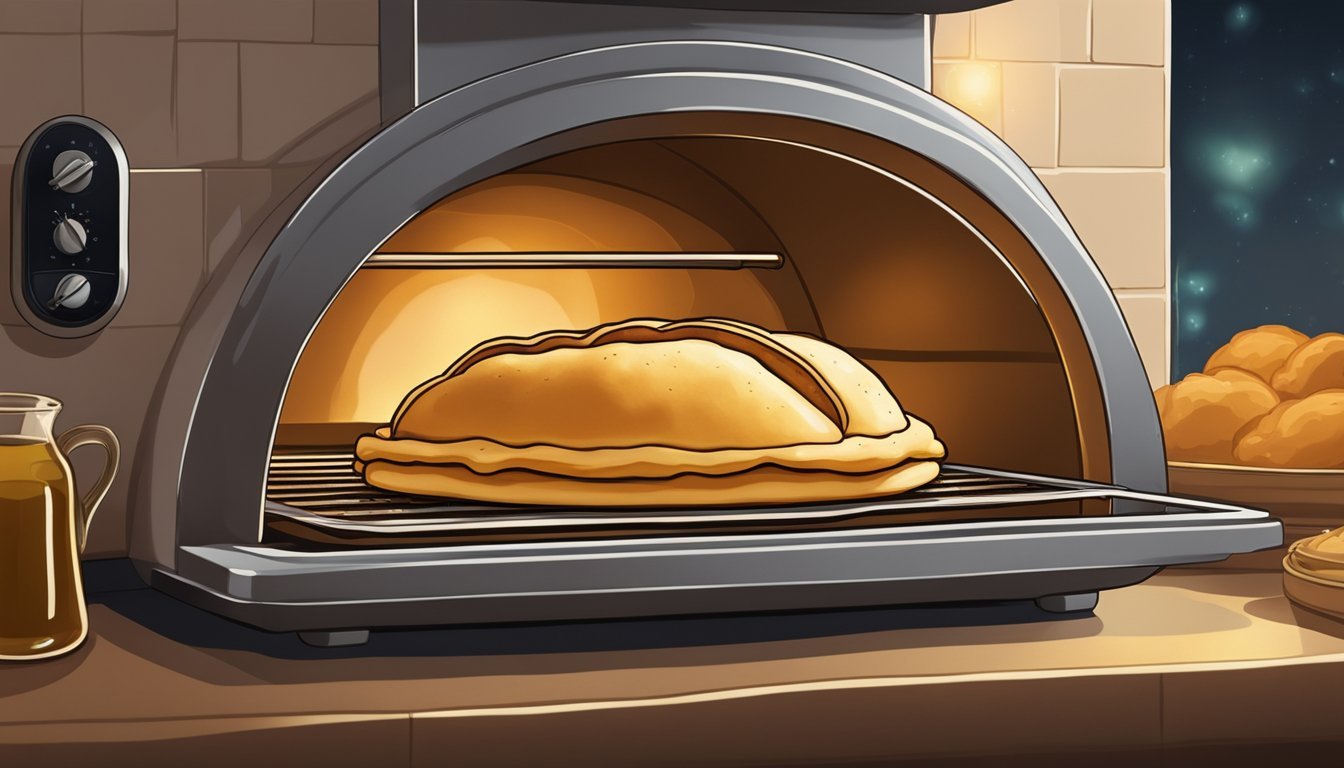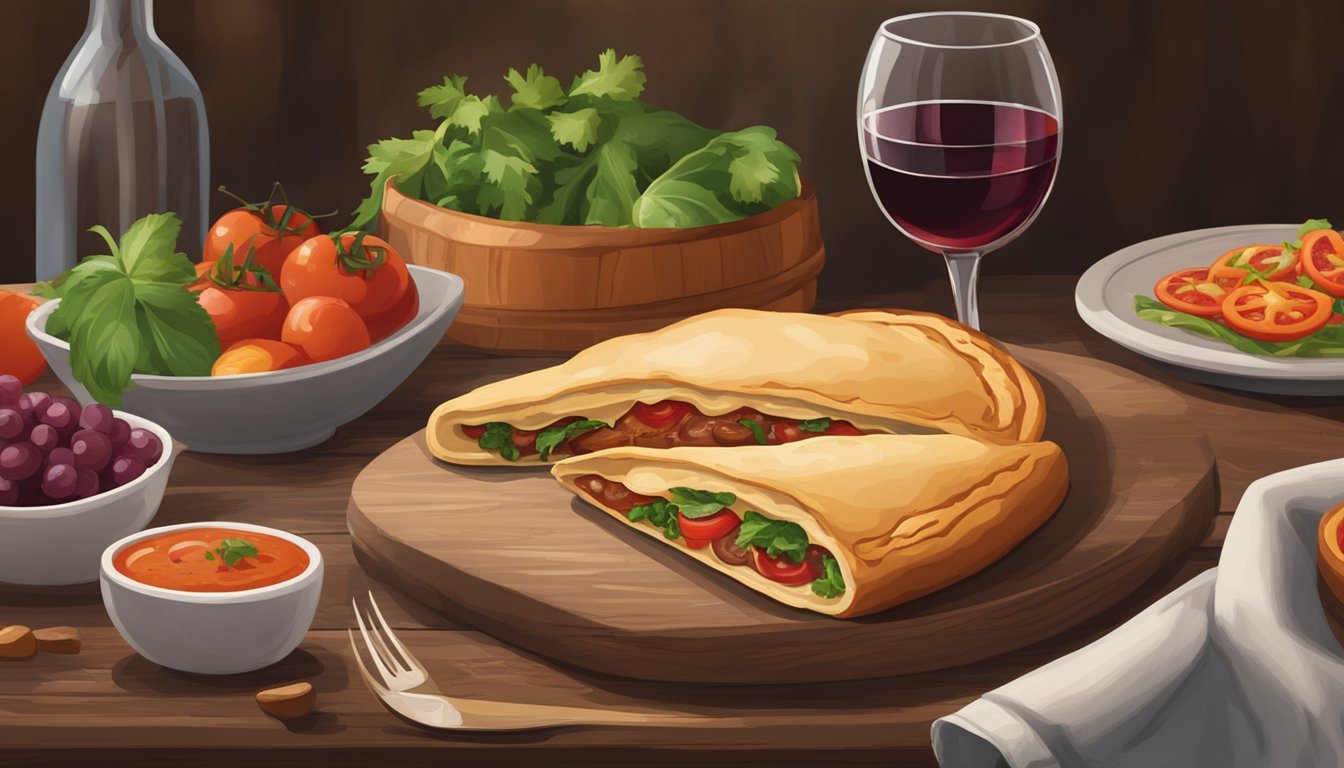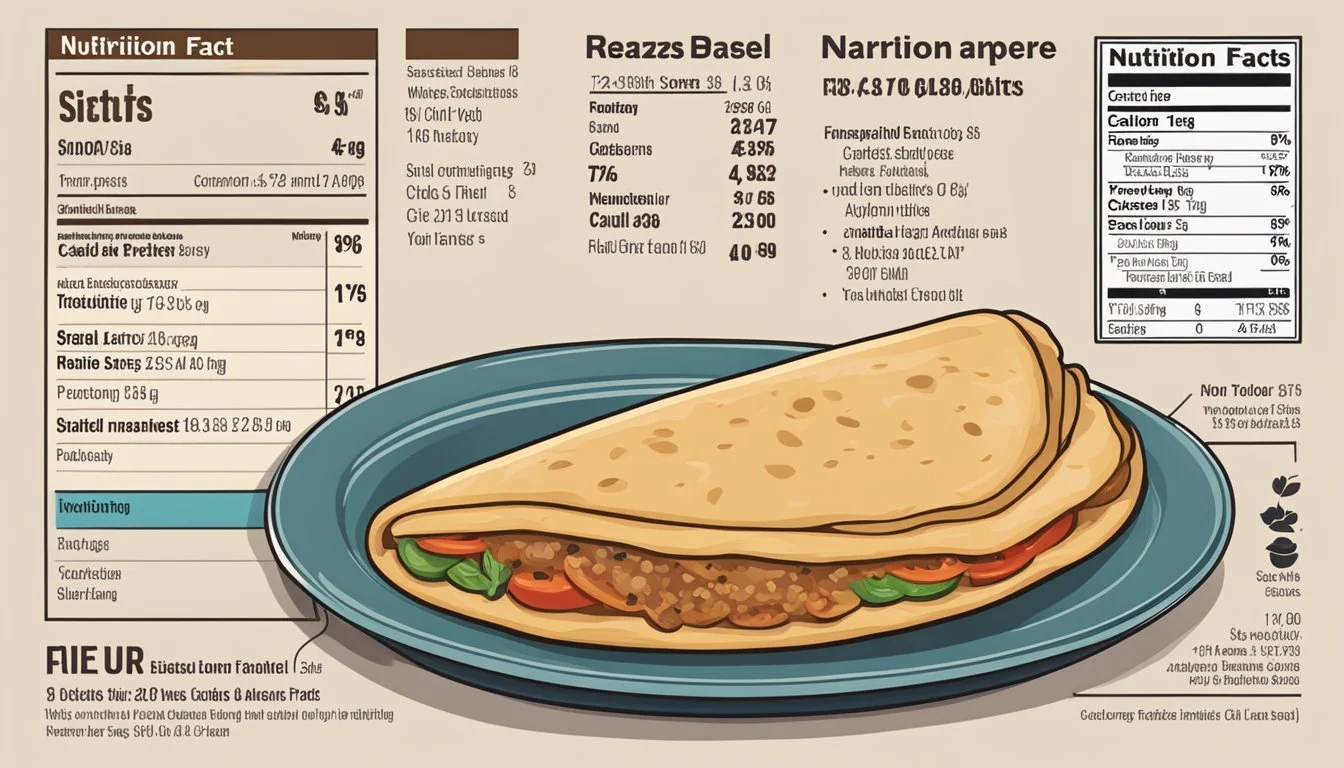How Long Do Calzones Last?
Essential Storage Tips and Best Practices
Calzones are a delicious and convenient meal option that can be stored for various lengths of time depending on how they are kept. When stored properly in the refrigerator, calzones can last up to three to four days. For longer storage, freezing them is an excellent choice, extending their shelf life to about one to two months.
Proper storage is crucial to maintaining the quality and safety of your calzones. Be sure to wrap them tightly in plastic wrap or aluminum foil before placing them in an airtight container. This helps prevent freezer burn and keeps the filling fresh.
Storing calzones correctly ensures they remain a tasty and viable option for a quick meal, whether freshly baked or reheated from the freezer. By following these guidelines, you can maximize the shelf life of your calzones and always have a delicious meal ready to enjoy.
Understanding Calzones
Calzones are a beloved dish in Italian cuisine, similar to folded pizzas, known for their versatile fillings and delicious crusts.
Definition and Origin
A calzone is an Italian stuffed bread that resembles a folded pizza. Its name, translating to "pant leg" in Italian, reflects its traditional shape. Originating from Naples, calzones were initially crafted as a portable meal for workers.
Historically, they were narrow, tubular shapes, akin to stromboli. Modern calzones are typically semicircular, created by folding pizza dough over various fillings. They are baked or fried and have become popular worldwide due to their convenience and customizable nature.
Components of a Calzone
The foundation of a calzone lies in its pizza dough crust. It's rolled out and folded, encasing an array of fillings. Key ingredients often include cheese, such as mozzarella or ricotta, providing a creamy texture.
Meat, like pepperoni or ham, is commonly added for protein. Vegetables such as spinach, onions, and peppers contribute flavor and nutrition. A tomato sauce binds the components together, ensuring a cohesive filling.
Calzones can be tailored to personal preferences, whether opting for a vegetarian version or a meaty one. They are versatile, easy to make, and perfect for both immediate consumption and freezing for later use.
Preparation Techniques
Achieving the best results with calzones involves mastering the dough's texture and ensuring the ingredients are well-assembled for optimal baking.
Creating the Perfect Dough
Making homemade pizza dough requires attention to detail. Start by mixing flour, yeast, salt, and warm water in a bowl. Knead the mixture until it becomes smooth and elastic, usually for about 10 minutes.
After kneading, let the dough rise in a warm place for 1-2 hours until it doubles in size. This step ensures a soft and chewy texture. Once risen, punch down the dough to release air bubbles.
Divide the dough into smaller portions and roll each into a 1/4-inch thick circle. Proper thickness is crucial for even baking. Use parchment paper on the baking sheet to prevent sticking and ensure easy transfer to the oven.
Assembling Your Calzone
Lay the rolled dough circles on a baking sheet lined with parchment paper. On one half of each circle, spread pizza sauce and add desired filling ingredients such as ricotta, pepperoni, salami, and shredded mozzarella.
Fold the dough over the filling to create a half-moon shape. Press the edges firmly and use a fork to seal them tight. This prevents leakage during baking.
Brush each calzone with an egg wash (beaten egg with water) for a golden brown finish. Cut small slits on top to allow steam to escape.
Bake in a preheated oven (450-475°F) for 15-25 minutes until golden brown.
Storage Recommendations
Properly storing calzones can significantly extend their freshness and safety. Both refrigeration and freezing are effective methods for preserving calzones, each with its own set of best practices.
Refrigeration Best Practices
Refrigerating calzones is ideal for short-term storage. To maximize freshness, follow these steps:
Allow calzones to cool to room temperature before refrigerating.
Use an airtight container to store the calzones, preventing moisture loss and exposure to other foods' odors.
Calzones can be safely stored in the refrigerator for up to 3-5 days.
Ensure that the refrigerator is set at or below 40°F (4°C) for optimal food safety.
Label containers with the date of storage to keep track of freshness.
Tip: Reheat refrigerated calzones in an oven or toaster oven to restore their texture and flavor.
Freezing for Longevity
For extended storage, freezing calzones is the best option. Here’s how to do it:
Cool Completely: Ensure that calzones are completely cooled before freezing to prevent ice crystal formation.
Wrap Individually: Wrap each calzone in parchment paper or aluminum foil to protect them from freezer burn.
Airtight Storage: Place the wrapped calzones into an airtight container or heavy-duty freezer bag.
Label and Date: Clearly label the container with the date of freezing for tracking purposes.
Freeze Efficiently: Store calzones flat in the freezer to maintain shape and prevent sticking. Calzones keep well in the freezer for up to 2 months.
Reheating Tip: Reheat frozen calzones directly from the freezer in the oven, adding a few minutes to the baking time compared to refrigerated ones.
Cooking and Reheating
Cooking and reheating calzones effectively ensure that they remain flavorful and safe to eat. Properly managing temperature and employing suitable methods are critical steps.
Achieving Optimal Temperature
When cooking or reheating calzones, reaching the right temperature is key. Preheating the oven is essential—setting it to 375°F to 400°F provides optimal results.
Place the calzone on a preheated baking sheet or parchment paper, ensuring even heat distribution. Bake for 7-10 minutes if it's already cooked, flipping halfway through for a crispy exterior.
For uncooked calzones, baking times vary depending on size but generally range from 15 to 20 minutes until the crust turns golden brown.
Methods for Reheating
Reheating calzones can be done using several methods:
Oven: Preheat to 350°F or 400°F. Place on a baking sheet for 5-10 minutes (fridge) or 18-20 minutes (freezer), flipping halfway.
Skillet: Set heat to low, add a few drops of water away from the calzone, cover and steam briefly.
Microwave: Use a microwave-safe plate, heat in short bursts of 30 seconds to avoid sogginess.
Utilizing these methods ensures the calzones are reheated evenly, retaining their flavor and texture without becoming dry or overly crispy.
Serving and Enjoyment
Serving calzones correctly enhances the meal experience. Consider the steps for cutting and plating, and pairing with sides and drinks to ensure maximum enjoyment.
Cutting and Plating
When ready to serve, let the calzone cool for about 10 minutes. This allows the filling to set, making it easier to cut into slices without the contents spilling out.
Use a sharp knife or pizza cutter to slice the calzone into even portions. For a formal presentation, place the slices on a large serving platter. If serving as an appetizer, arrange the slices in a circular pattern for an appealing look.
Consider offering a small dish of marinara or ranch dip on the side. This provides additional flavor and enhances the dining experience. For added aesthetic, garnish the plate with a sprinkle of fresh herbs such as parsley or basil.
Pairing with Sides and Drinks
To complement the savory flavors of the calzone, serve with a fresh salad. A simple Caesar or mixed greens salad works well. Add a vegetable side such as roasted asparagus or steamed broccoli for a balanced meal.
For drinks, a light red wine such as Pinot Noir pairs nicely with the rich, cheesy calzone. For a non-alcoholic option, iced tea or sparkling water with a slice of lemon is a refreshing choice.
Offering a dessert like gelato or a fruit compote can round out the meal beautifully. These pairings enhance the overall dining experience, creating a well-rounded, enjoyable meal.
By focusing on precise and thoughtful arrangements, serving and enjoying calzones becomes a delightful experience for all.
Health and Nutrition Facts
Calzones can be dense in calories, fats, and sodium, but balance can be achieved by carefully considering ingredients and portion sizes. Understanding these factors is key to incorporating calzones into a balanced diet.
Caloric Content and Macros
Calzones typically contain high levels of calories, fat, and cholesterol, primarily due to ingredients like cheese and meats. For example, a pepperoni calzone may have approximately 1306 calories per serving, with fat content reaching around 90 grams.
A standard calzone can also provide a significant amount of protein, often around 30-50 grams depending on the fillings used. Carbohydrates mainly come from the dough, contributing up to 200 grams. It’s crucial for those tracking macros to account for these significant nutritional components.
Balancing Your Meal
To achieve a balanced diet while enjoying calzones, consider modifying ingredients. Opt for veggie-filled calzones to reduce calorie and fat intake. Vegetables add essential nutrients without significantly increasing calories.
Portion control is another effective strategy. Sharing one calzone or eating a smaller portion can help manage caloric and fat intake. Pairing a calzone with a fresh side salad can add fiber and nutrients, promoting balanced nutrition.
Using reduced-fat cheeses and leaner meats, like turkey or chicken, can also lower calorie content. Watching sodium levels by choosing low-sodium ingredients helps to keep daily intake within healthy limits.







